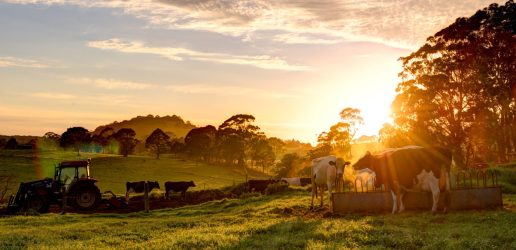Agriculture is responsible for the vast majority – 87 per cent – of ammonia emissions in the UK. Housing livestock is the largest source of ammonia, with poultry the third highest emitter after beef and dairy cattle. Ammonia contains nitrogen, which contributes to air pollution and climate change.
Trees can reduce pollutants like ammonia from the air, meaning that tree-belts, often called shelter-belts, planted to provide protection for livestock or crops and reduce soil erosion and water loss, can also absorb the ammonia produced by livestock farming.
For the first time, scientists have studied the effects of ammonia, emitted by poultry, on the surrounding tree-belt, soil biochemistry and soil microbes.
It was found that while the tree-belt absorbed ammonia, higher concentrations of ammonia closer to the poultry housing significantly altered soil chemistry and the variety of microbes found in the soil.
The results were published by Katie Somerville-Hall et al in the journal, Applied Soil Ecology.
“The findings show that while trees planted close to livestock can be an effective way of absorbing ammonia emissions, there is a trade-off, as soil chemistry and microbe communities are affected,” said Kaisa Ilmari, a soil scientist at Forest Research.
“This matters because what happens below ground affects what happens above ground. The soil chemistry as well as the diversity and richness of the microbes affects the variety and health of plants growing there and the wider ecosystem functioning.”

The research took place at a poultry farm in Cumbria where the scientists studied a 13-year-old tree-belt. They evaluated the effect of ammonia by measuring tree growth, ammonia concentrations and analysing soil samples collected at varying distances from where the poultry were housed.
“Tree-belts are effective in absorbing nitrogen, via ammonia, which helps to reduce air pollution and mitigate climate change,” said Dr Elena Vanguelova, Senior Biogeochemist / Soil Sustainability Research Leader at Forest Research.
“Nitrogen also helps trees to grow more wood, leaves and roots, which allows them to sequestrate more carbon, both in the trees and in the soil. However, these benefits are at the expense of soil acidification, the depletion of nutrients, and a reduction in the variety of microbes in the soil.
“As agroforestry is increasingly adopted, both to mitigate ammonia emissions, and as a carbon sequestration strategy to tackle climate change, it’s vital that we understand what is happening both above and below the ground, to work out the trade-offs between ecosystem services provisions.”
The research was carried out in collaboration with the University of Reading, Bangor University, Czech University of Life Sciences, UK Centre for Ecology & Hydrology, Natural England and The Lakes Free Range Egg Co Ltd. It was funded by Defra’s Nature for Climate Fund.
Read more: Expanding Agroforestry – Forest Research
Katie Somerville-Hall et al, Ammonia emissions from a poultry farm drive changes in soil biogeochemistry and microbial communities along a treebelt in northern England, Applied Soil Ecology DOI: 10.1016/j.apsoil.2025.106267
Recent News
View All news
What effect do ammonia emissions have on surrounding trees and soil?
Ammonia absorbing tree-belts lead to ecosystem trade-offs – increased nitrogen and carbon capture but reduced microbe diversity in soil – suggests new research.

New Welsh tree species shortlisting project to help future forest resilience
A new research programme to identify a shortlist of productive tree species, suited to both current and predicted future climatic conditions in Wales, has been given the go ahead.

How do farmers feel about growing trees?
Forest Research says understanding values is key to finding out what motivates farmers to grow trees.

What effect do ammonia emissions have on surrounding trees and soil?
Ammonia absorbing tree-belts lead to ecosystem trade-offs – increased nitrogen and carbon capture but reduced microbe diversity in soil – suggests new research.

New Welsh tree species shortlisting project to help future forest resilience
A new research programme to identify a shortlist of productive tree species, suited to both current and predicted future climatic conditions in Wales, has been given the go ahead.

How do farmers feel about growing trees?
Forest Research says understanding values is key to finding out what motivates farmers to grow trees.
